Isle of Man Steam Railway’s 150th anniversary
Posted by Chris Graham on 4th August 2023
Simon Colbeck reports on the Isle of Man Steam Railway’s 150th anniversary celebrations, which involved a week of spectacular activities.

Isle of Man Steam Railway: Former Manx Northern Railway No.4 Caledonia climbs through the woods of the Crogga Valley, on the Isle of Man.
In April 2023 I finally ticked off a long-time ambition of mine to return to the Isle of Man Steam Railway as it celebrates its 150 anniversary, with the primary intention of photographing the ‘odd man out’ of the locomotive fleet; the 1885 Dubs-built 0-6-0T Caledonia. Renowned steam charter expert David Williams had organised a spectacular week of railway activity on the island, with a strong emphasis on the beautiful Scottish-built Caledonia, so I set off across the Irish Sea to spend a week in the lovely old resort town of Port Erin.
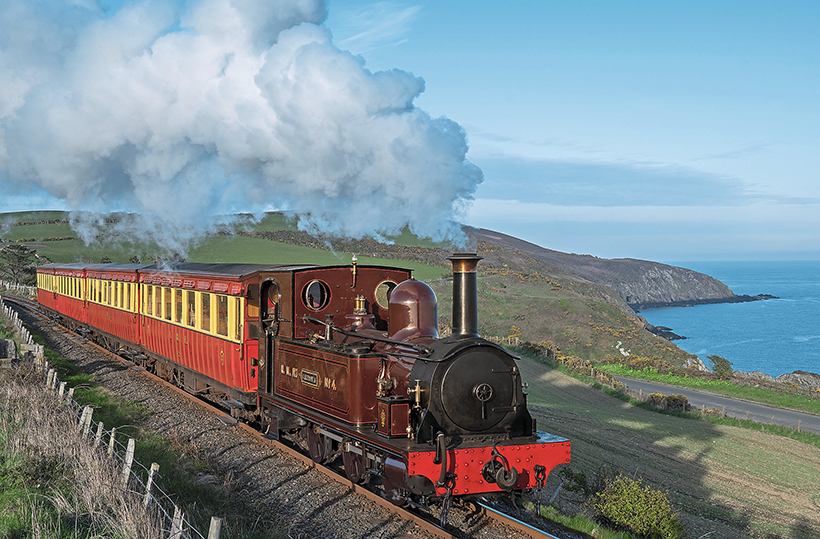
The 1885 Dubs-built former Manx Northern Railway No.4 Caledonia heads out by the sea at Keristal.
The three-foot gauge Isle of Man Railway (IMR) company commenced operations in 1873 on the first section of the railway to be completed between Douglas and Peel. Then, in 1874, the line from Douglas to Port Erin was opened. A third line was built between 1878 and 1879 by a new company, the Manx Northern Railway, from St John’s to Ramsey. A further short line was constructed from St John’s to Foxdale in 1885 to serve the lead mines there.
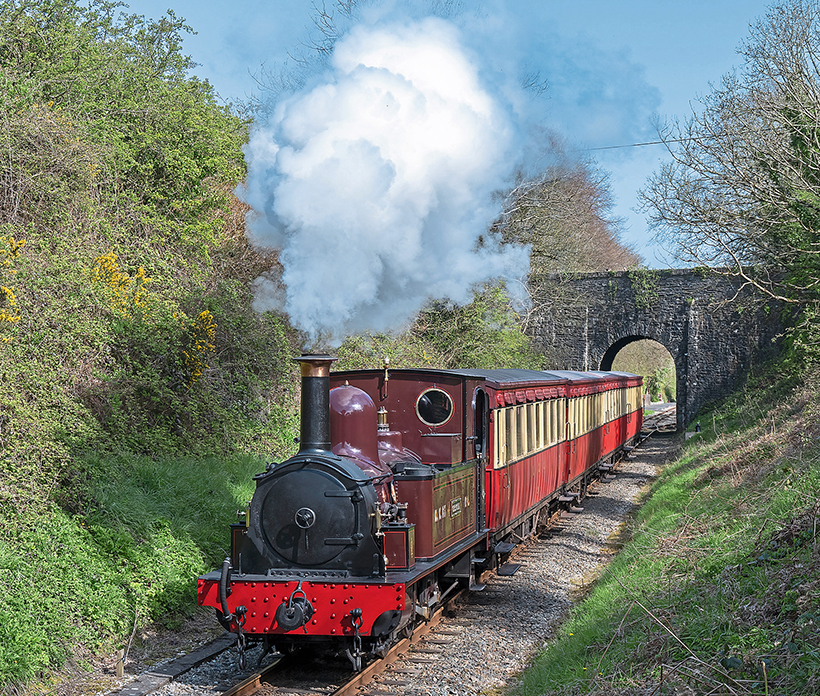
The 1885 Dubs-built former Manx Northern Railway No.4 Caledonia leaves Santon, on route to Castletown.
Although it was built by the nominally independent Foxdale Railway, it was operated by the Manx Northern. It was to operate this line that the Manx Northern purchased Caledonia from Glasgow-based locomotive manufacturer, Dubs. At the time it was twice as powerful as the existing Manx Northern locomotives – necessary for the heavy lead ore trains it was to haul on the Foxdale Branch.

Beyer Peacock 5382 of 1910 Kissack in Douglas shed, undergoing a spot of attention.
In 1895, Caledonia was hired out to help with the construction of the Snaefell Mountain Railway. To facilitate the engine’s use on the 3ft 6in mountain line, a temporary extra rail – at 3ft gauge – was laid up the four-and-a-half mile route from Laxey up the mountain.
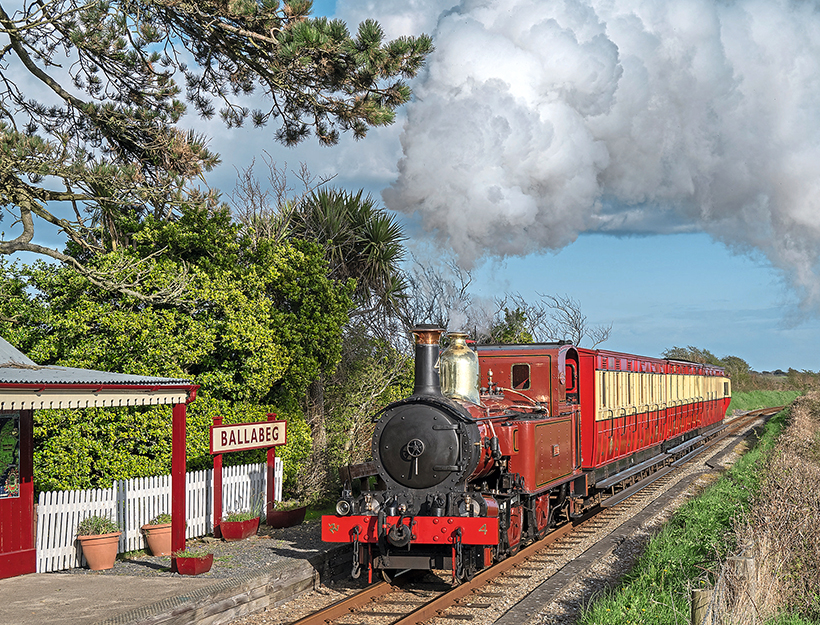
Beyer Peacock 1415 Loch of 1874 approaches the pretty Ballabeg station on the Isle of Man Railway.
After an eventful four months on the mountain line – including running away and ending up in a greengrocer’s shop in Laxey! – Caledonia returned to the more mundane duties of the Foxdale branch.
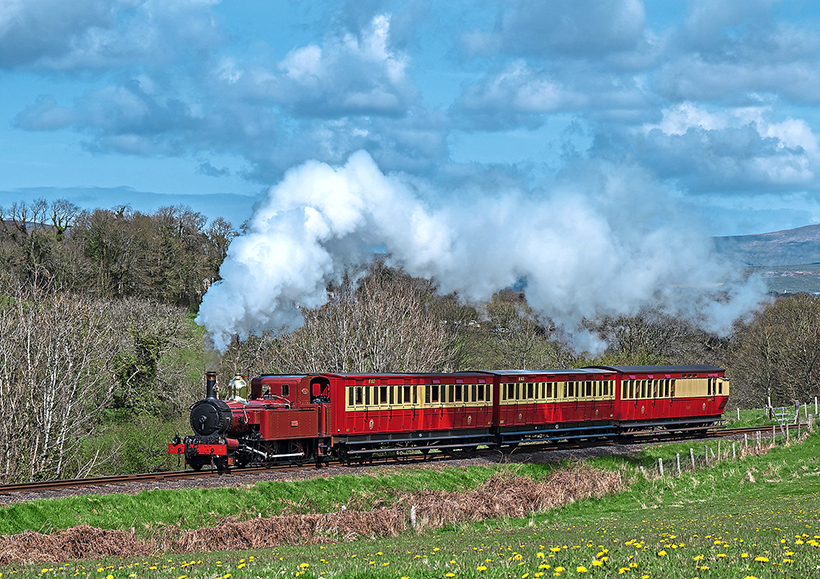
Passing a meadow full of dandelions, Beyer Peacock 1415 Loch of 1874 climbs out of Douglas up Nunnery bank on the Isle of Man.
The Manx Northern and Foxdale Railways both got into financial difficulties and were eventually taken over by the IMR in 1905, giving the combined system a peak total network of about 46 miles.
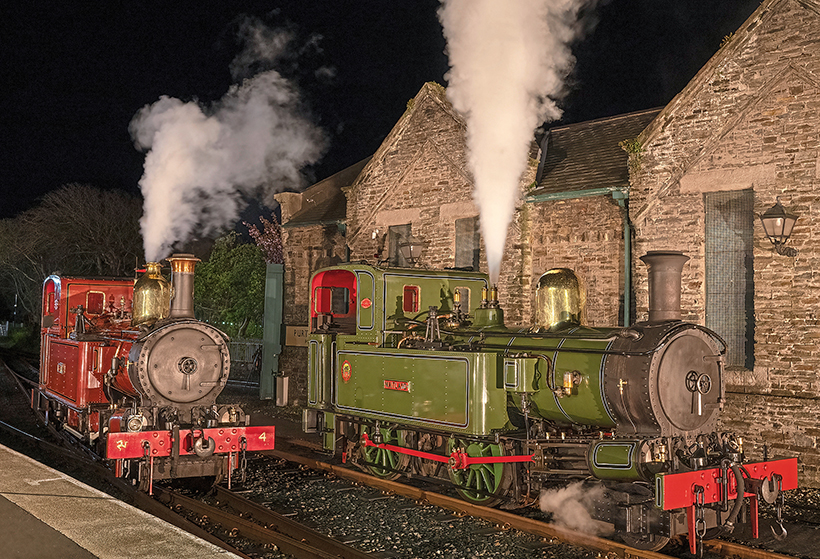
‘Manx Peacocks’ 1874-built Loch and 1905 built Maitland blow off steam outside Port Erin shed.
Shortly after the takeover, the mines at Foxdale closed and Caledonia joined the main fleet of Beyer Peacock tanks working out of Douglas. With its additional power it was mainly employed on special workings, such as the cattle specials, snow plough duties and the internment camp-supply trains of World War 1.
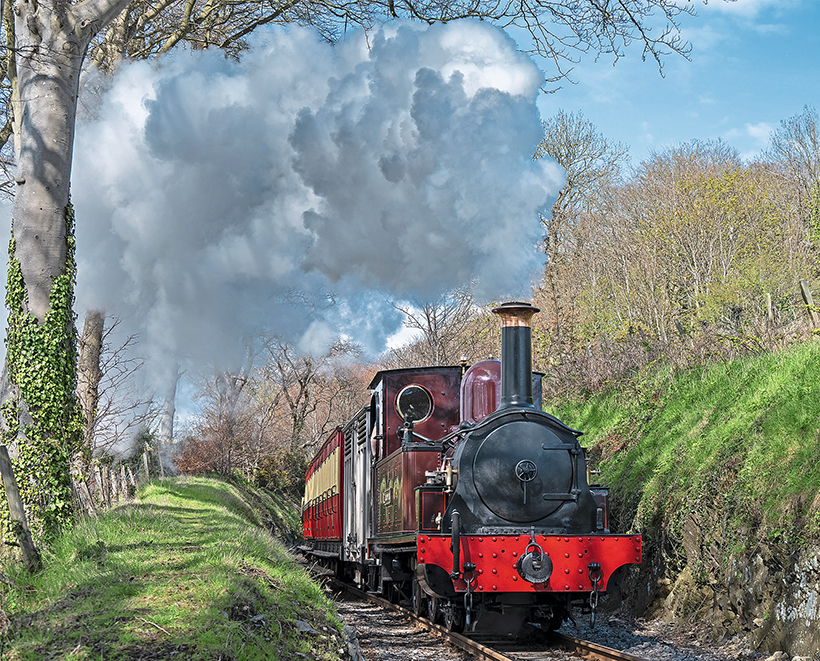
Caledonia puts down the power as it climbs up Nunnery bank through an avenue of trees.
The entire steam railway system closed in 1965, but was then leased by the Marquis of Ailsa who, with the assistance of the Isle of Man government, reopened the whole railway in 1967. In spite of investing a significant amount of money in the railways after two poor summer seasons, the Peel and Ramsey lines sadly closed for good in 1968.
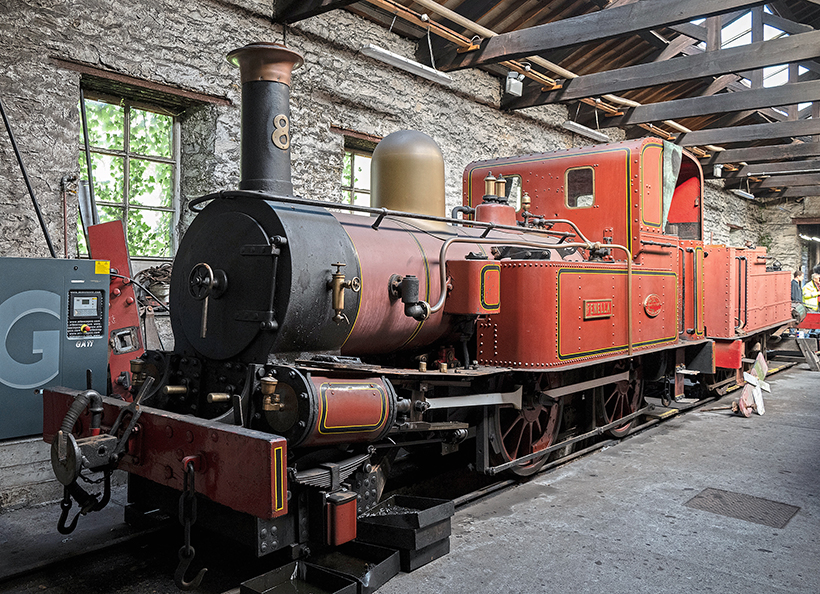
At the back of Douglas shed Fenella sits in dry storage. The 1894-built Beyer Peacock’s boiler certificate expired in 2020, and it has been in storage ever since.
Caledonia hauled its last train in June 1968 before going on display at various locations on the railway.
This meant that all trains on the surviving section of the railway were hauled by examples of the famous ‘Manx Peacocks’, built in Manchester by Beyer Peacock over the course of 53 years.

Maitland approaches Castletown station with the last train of the day for Port Erin.
The 15 members of the class, although displaying detail differences and improvements, all share a common ancestry, and the hallmark angled cylinders and 2-4-0 wheel arrangement.
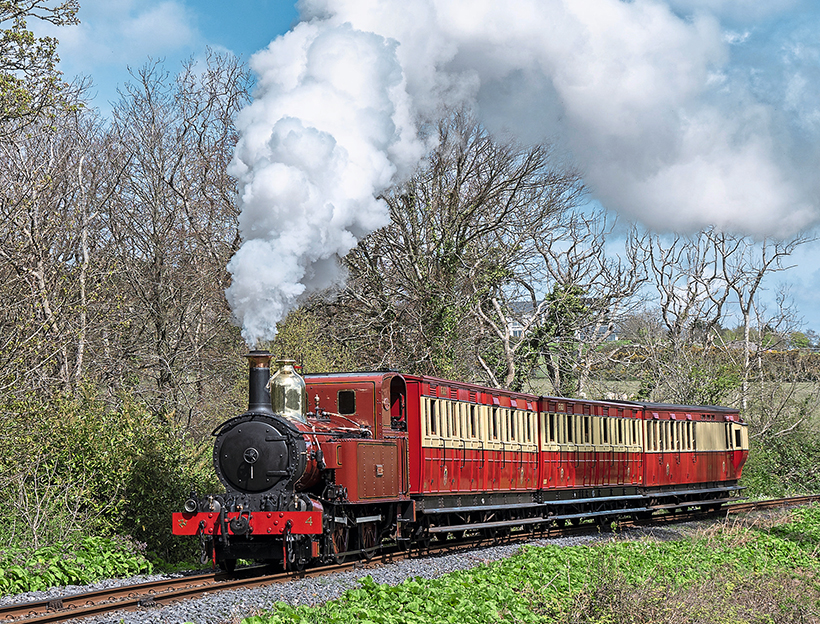
On a beautiful spring day, Loch approaches the Crogga Valley.
In 1994, Caledonia was returned to steam and today operates on the remaining 15½-mile line run from Douglas to Port Erin, together with the fleet of beautiful ‘Manx Peacocks’. The railway is now solely owned by the Isle of Man government, along with the Manx Electric and Snaefell Mountain Railways.
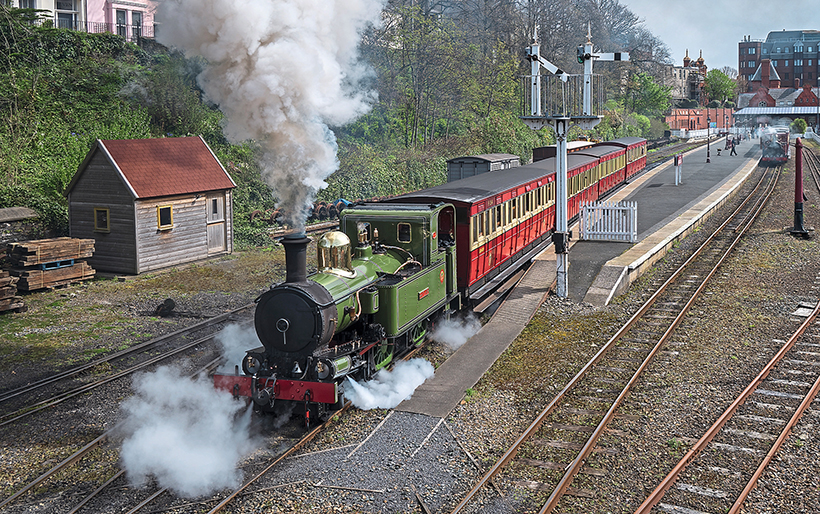
The first train of the day makes a rousing departure from Douglas station, with Number 11 Maitland in charge.
The Manx Electric and Snaefell Mountain Railways are remarkable survivors of inter-urban electric tramways, both dating from the 1890s. The beautiful and scenic nature of the routes, and the delightful vintage rolling stock, provide some wonderful photographic opportunities.
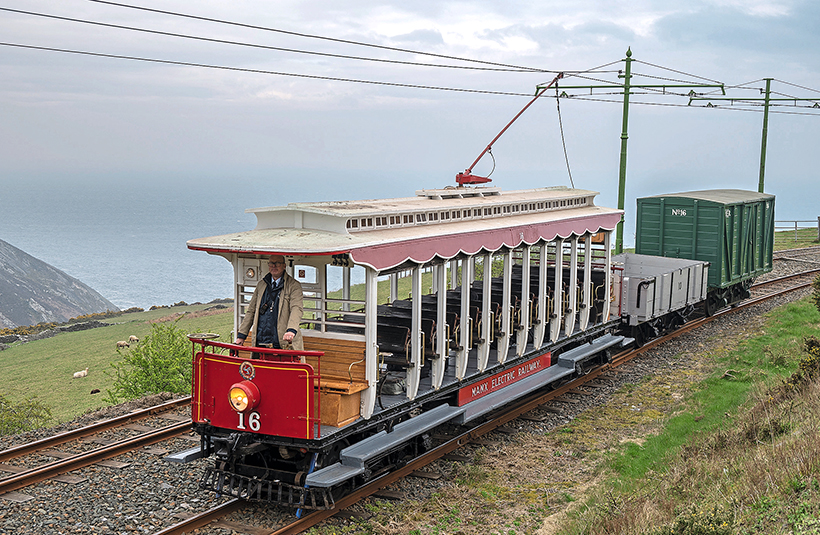
After Laxey, the line clings to the coast offering some superb views of the cliffs and the sea. The 1898-built toast rack car number 16 heads towards Ramsey with a pair of wagons in tow.
2023 is a special year for the Island’s railway systems. The Isle of Man Steam Railway is celebrating its 150th anniversary and the Manx Electric Railway its 130th anniversary. There are plenty of fantastic events planned throughout the year, providing all the more reason to visit this wonderful vintage transport paradise.
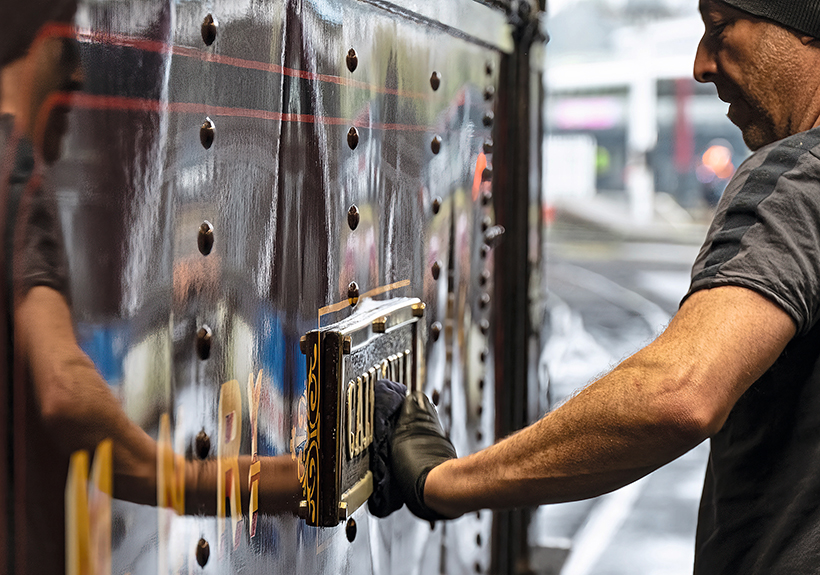
One of the railway’s full-time engine crews gives Caledonia’s nameplate a polish.
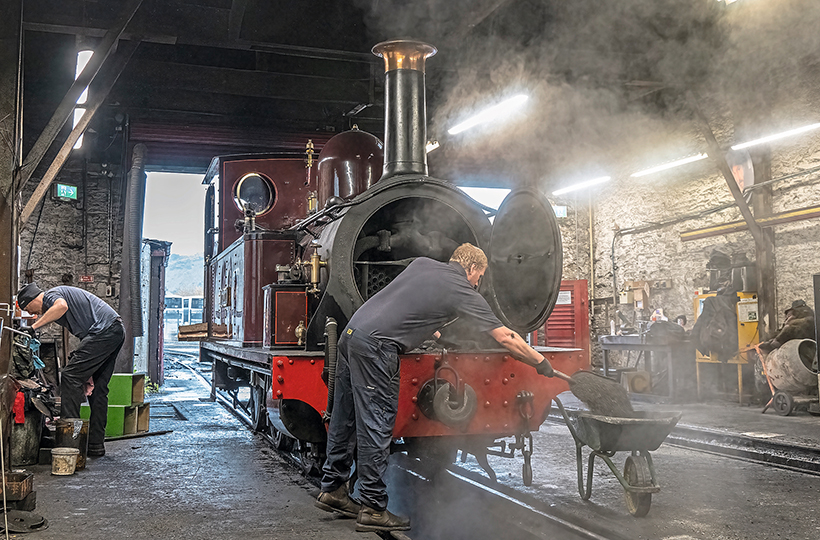
Left in light steam overnight in Douglas shed, Caledonia’s crew start the engine’s preparation for the day by cleaning out the smokebox.

The John Chadwick stationary engine purchased second-hand by the railway in the 1920s to power the workshops line shaft-driven machine tools adds to the delightful Victorian atmosphere of Douglas shed.
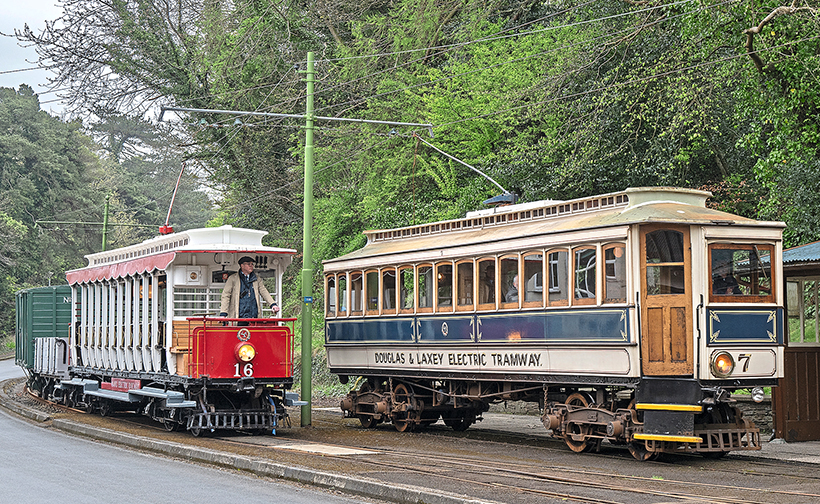
At Groudle Glen on the Manx Electric Railway, toast rack car number 16 is looped for Tunnel Car number 7 on the service train to Ramsey pass. The 1894-built number 7 was one of six so-called Tunnel cars named due to their long slim interiors.
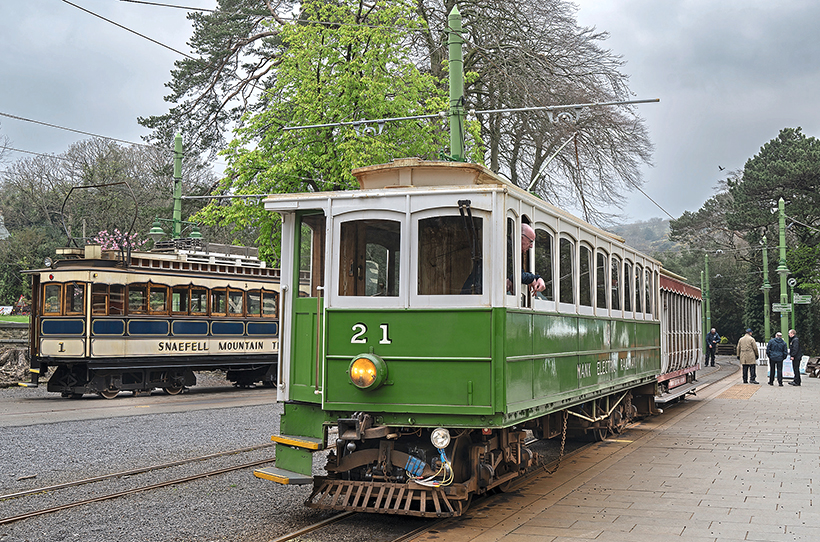
Car number 21 arrives at Laxey on a south-bound service. Laxey is the junction station for the Snaefell Mountain Railway. The line’s first car, number 1 of 1895 in its original livery, waits to take the next service up the mountain.
All photographs by the author.
This feature comes from the latest issue of Old Glory, and you can get a money-saving subscription to this magazine simply by clicking HERE

Previous Post
We visit the brilliant Shillingstone Steam Rally

Next Post
Hadlow Down Traction Engine & Historic Vehicle Rally



